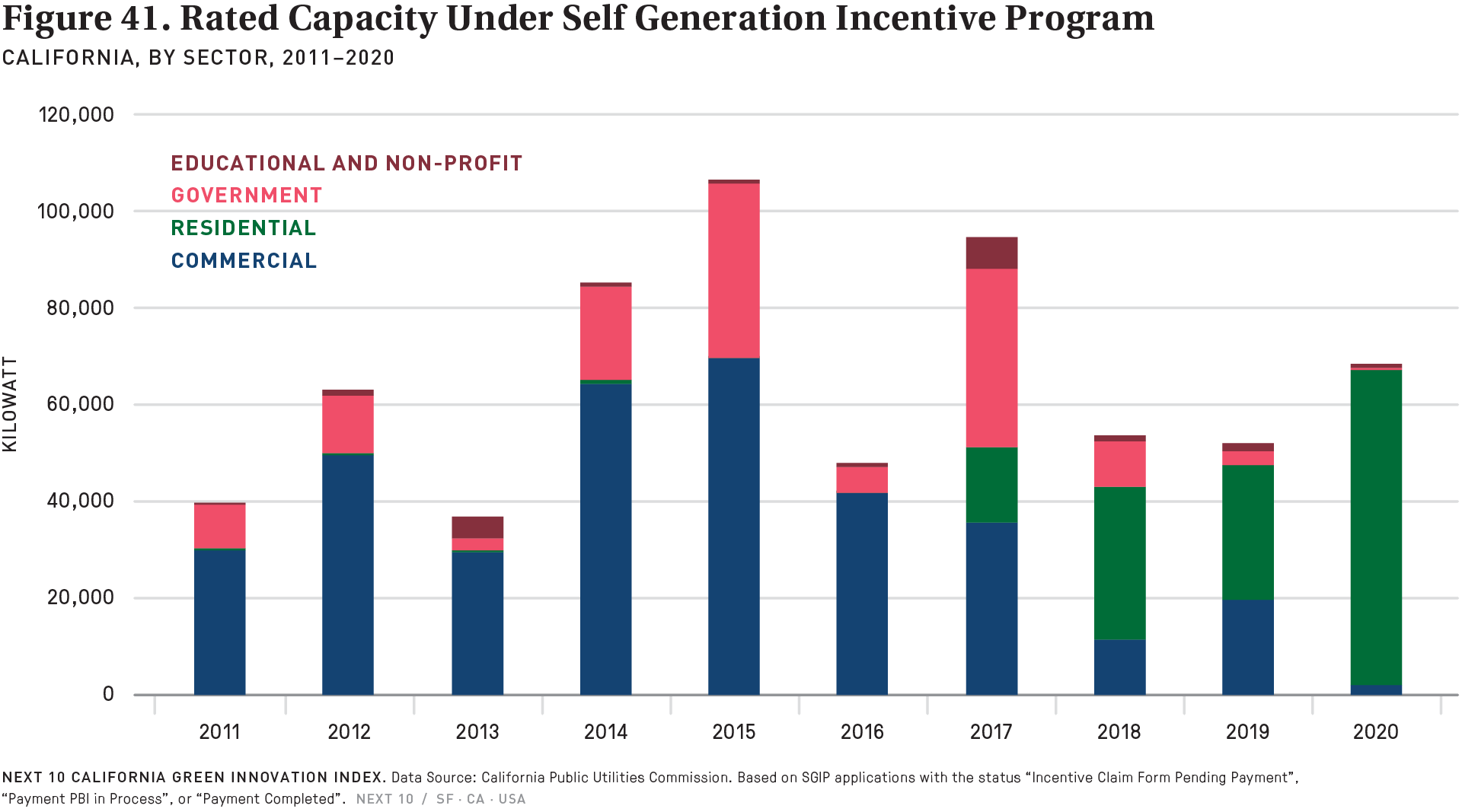Introduction
- The CPUC's Self-Generation Incentive Program (SGIP) provides incentives to support existing, new, and emerging distributed energy resources (DERs). DERs, which are defined as distribution-connected distributed generation resources, energy efficiency, energy storage, electric vehicles, and demand response technologies, play an important role in identifying optimal portfolios of resources under the state’s integrated resource plan (IRP), as specified in Public Utilities Code §454.51 and §454.52. For the SGIP program, all sectors are eligible. Most of the rebates issued to customers in the residential sector have advanced storage systems (e.g., electrochemical storage) as eligible DER.
Highlight
- Since 2018, the residential sector has had the most rebate-qualifying DERs, whereas commercial and government sectors had the most rebate-qualifying DERs before then.94 Almost all of the rated capacity was for electrochemical storage technologies (such as lithium-ion battery storage) in the residential sector. By comparison, before 2018, fuel cell electric and gas turbine were the most popular DER technologies by rated capacity. In 2020, 68.6 megawatt of electrochemical storage qualified for SGIP rebates, up 31.4 percent compared to 2019, which had 52.2 MW. At the current rate, installations of advanced energy storage systems should continue to increase.
94 There are three incentive level designations that provide rebates for qualifying distributed energy systems installed on the customer’s side of the utility meter. Qualifying technologies include wind turbines, waste heat to power technologies, pressure reduction turbines, internal combustion engines, microturbines, gas turbines, fuel cells, and advanced energy storage systems. Level 1 designation expired in 2006; only Levels 2 and 3 are active.
More About
Renewable Energy
Related Content
